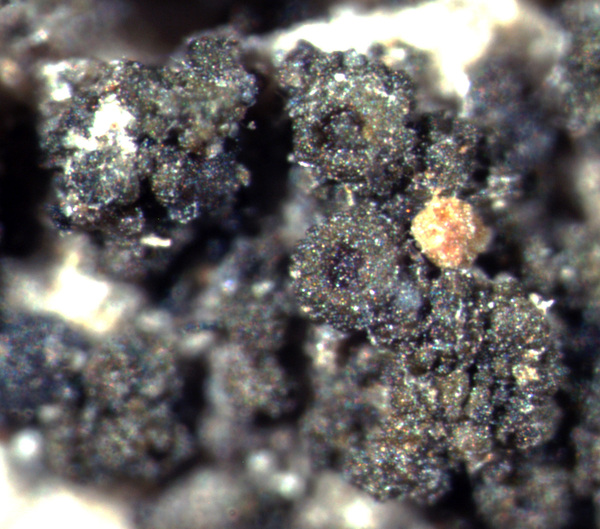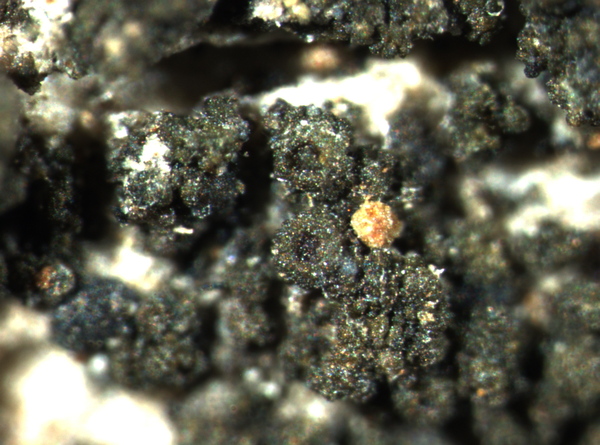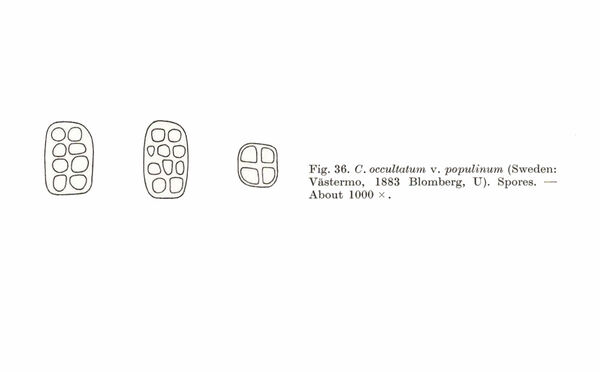Rostania occultata (Bagl.) Otálora, P.M. Jørg. & Wedin
Fungal Divers., 64, 1: 289, 2013. Basionym: Collema occultatum Bagl. - Comm. Soc. Critt. Ital., 1: 1, 1861.
Synonyms: Collema quadratum J. Lahm ex Körb.; Leptogium occultatum (Bagl.) Zahlbr.; Rostania quadrata (Körb.) Trevis.
Description: Thallus subcrustose to indistinctly subsquamulose-subplacodioid, homoiomerous, gelatinous when wet, forming a thin, effuse crust of scattered to contiguous, 120-170(-200) μm wide granules. Lobes absent or few, small and short, 150-200 µm thick (when moist), smooth, more or less channelled but sometimes becoming coralloid and forming c. 1 mm wide rosettes. Upper surface dark olive-green to black, dull, epruinose, semi-translucent when wet. Apothecia lecanorine, often numerous, sessile, mostly terminal, 0.1-0.3(-0.5) mm across, globose and perithecioid when young, with an initially punctiform, later concave, dark red to rarely pale yellow-brown disc, an entire to lobulate, finally sometimes excluded thalline margin and often a paler, up to 15 µm wide parathecial ring. Thalline exciple with a simple pseudocortex; proper exciple euthyplectenchymatous, with small-ellipsoid to rectangular cells, c. 10 µm thick; epithecium brown; hymenium colourless, 80-140 µm high, K/I+ blue; paraphyses c. 2 µm thick at mid-level, the apical cells up to 5 µm wide; hypothecium colourless, 15-50 µm high. Asci 8-spored, cylindrical-clavate, the apex strongly thickened, the apical dome K/I+ pale blue, with a downwardly projecting K/I+ deep blue tubular structure. Ascospores subglobose when young, then more or less cuboid with rounded angles and truncate ends, muriform with (4-)8-12 cells in optical view, (11-)13-18(-22) x 9-15 µm. Pycnidia immersed, globose. Conidia bacilliform, 4-5 x c. 1 µm. Photobiont cyanobacterial (Nostoc, the cells in chains of up to 10). Spot tests: all negative. Chemistry: without lichen substances.
Growth form: Crustose
Substrata: bark
Photobiont: cyanobacteria, filamentous (e.g. Nostoc, Scytonema)
Reproductive strategy: mainly sexual
Commonnes-rarity: (info)
Alpine belt: absent
Subalpine belt: absent
Montane belt: extremely rare
Dry submediterranean belt: extremely rare
Humid submediterranean belt: extremely rare
Padanian area: absent
pH of the substrata:
1 2 3 4 5
Solar irradiation:
1 2 3 4 5
Aridity:
1 2 3 4 5
Eutrophication:
1 2 3 4 5
Poleotolerance:
0 1 2 3
Altitudinal distribution:
1 2 3 4 5 6
Rarity
absent
extremely rare
very rare
rare
rather rare
rather common
common
very common
extremely common
Loading data...
Occurrence data
Predictive map
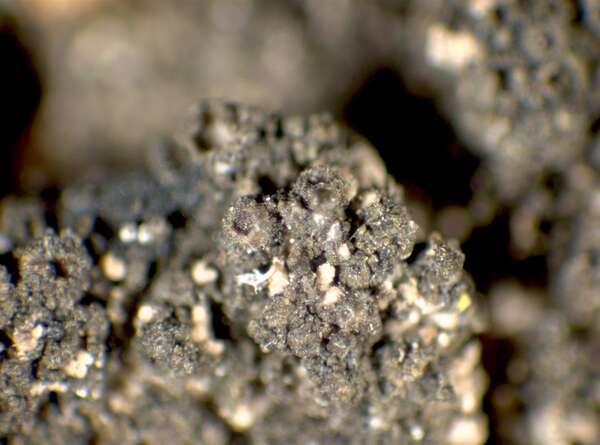
P.L. Nimis; Owner: Department of Life Sciences, University of Trieste
Herbarium: TSB (8252)
2001/12/04
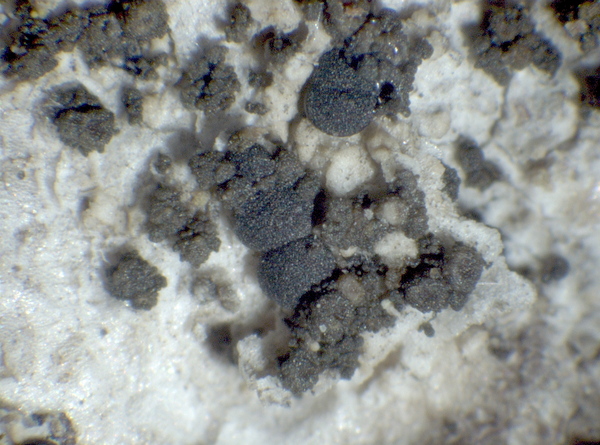
P.L.Nimis; Owner: Department of Life Sciences, University of Trieste
Herbarium: TSB (36982)
2008.02.25
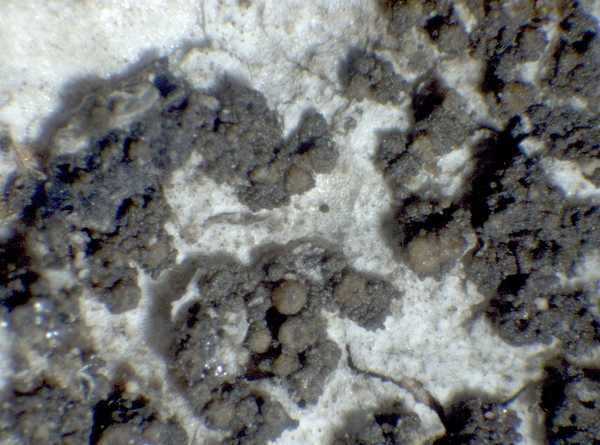
P.L.Nimis; Owner: Department of Life Sciences, University of Trieste
Herbarium: TSB (36982)
2008.02.25
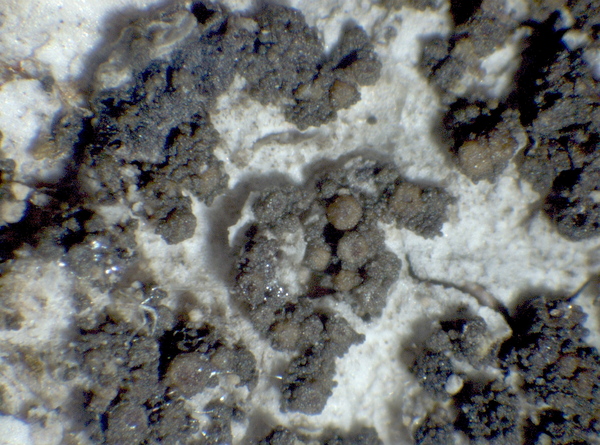
P.L.Nimis; Owner: Department of Life Sciences, University of Trieste
Herbarium: TSB (36982)
2008.02.25
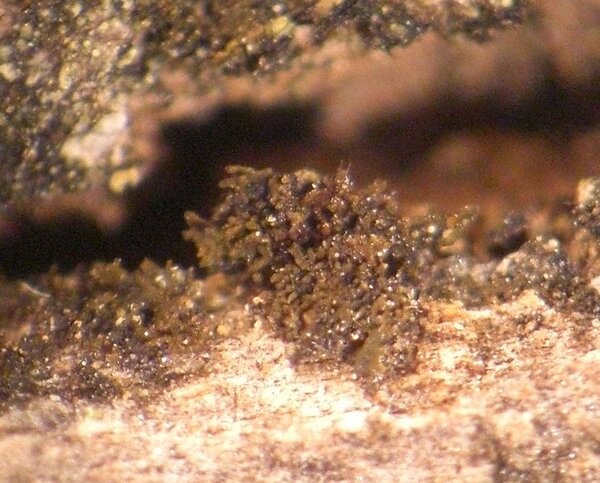
Curtis Randall Björk – CC BY-SA 4.0
Northwest New Mexico Date: 2010-03-05 Photographed from specimen (T.T. McIntosh 9668b, Hb. McIntosh), on oak bark
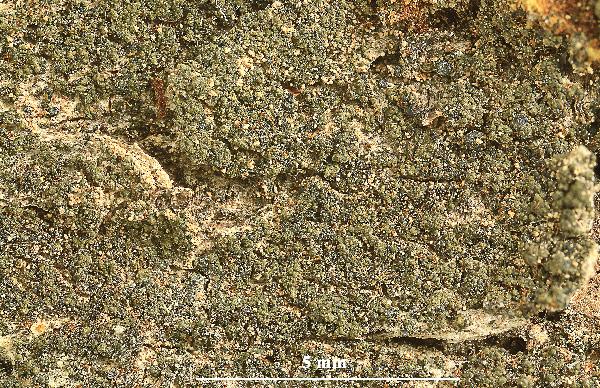
Felix Schumm - CC BY-SA 4.0
[VZ2005], Suecia. Värmland: Södra Finnskoga, Avensasen, 390 m. Ad
corticem arborum (Acer platanoides). Leg. Sigurd W. Sundell,
27.07.1979. - EX A. V ZDA: LICHENES SELECTI EXSICCATI NR. 2005.
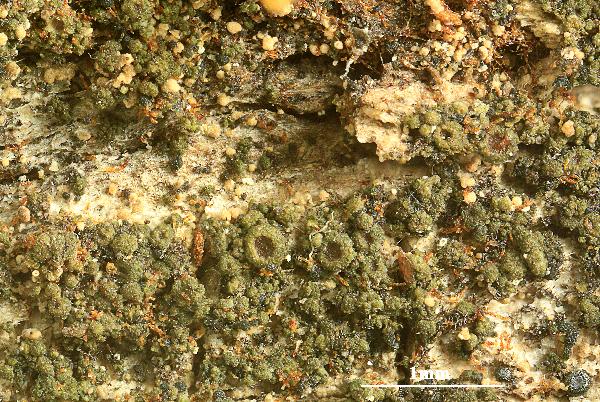
Felix Schumm - CC BY-SA 4.0
[VZ2005], Suecia. Värmland: Södra Finnskoga, Avensasen, 390 m. Ad
corticem arborum (Acer platanoides). Leg. Sigurd W. Sundell,
27.07.1979. - EX A. V ZDA: LICHENES SELECTI EXSICCATI NR. 2005.

Source: Košuthová A, Westberg M, Wedin M. A revision of the Rostania occultata (Collemataceae) complex in Fennoscandia. The Lichenologist. 2022;54(1):13-24. doi:10.1017/S0024282921000487 - CC BY 4.0
Rostania occultata (A, UPS L-003461; B, S F388790; C & E, UPS L-872297; D, UPS L-123018). A, habitus – granular thallus composed of globose granules and apothecia dominating the thallus (Ap). B, habitus – thallus composed of granules and small squamules and apothecia (Ap). C, section of apothecium; note the excipulum thallinum with a simple pseudocortex (Pc) and Nostoc cells in short chains (N). D, section of apothecium mounted in Phloxin; note the euthyplechtenchymatous excipulum proprium (Ep) below the hymenium and Nostoc cells (N) with short coiled chains. E, section of apothecium. Scales: A & B = 1 mm; C & D = 10 μm; E = 50 μm.
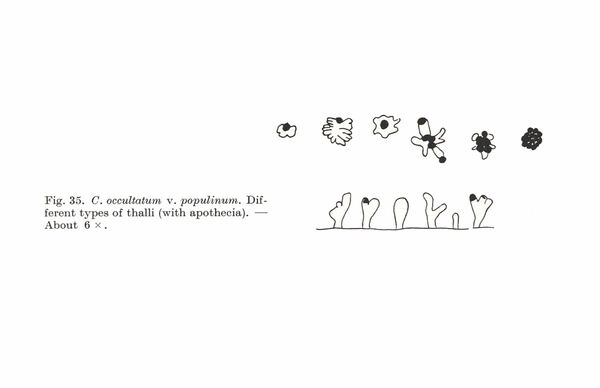
Degelius G. 1954. The lichen genus Collema in Europe: Morphology, Taxonomy, Ecology. Symbolae Bot. Upsal. 13, 2: 1-499.
Growth form: Crustose
Substrata: bark
Photobiont: cyanobacteria, filamentous (e.g. Nostoc, Scytonema)
Reproductive strategy: mainly sexual
Commonnes-rarity: (info)
Alpine belt: absent
Subalpine belt: absent
Montane belt: extremely rare
Dry submediterranean belt: extremely rare
Humid submediterranean belt: extremely rare
Padanian area: absent
pH of the substrata:
| 1 | 2 | 3 | 4 | 5 |
Solar irradiation:
| 1 | 2 | 3 | 4 | 5 |
Aridity:
| 1 | 2 | 3 | 4 | 5 |
Eutrophication:
| 1 | 2 | 3 | 4 | 5 |
Poleotolerance:
| 0 | 1 | 2 | 3 |
Altitudinal distribution:
| 1 | 2 | 3 | 4 | 5 | 6 |
Rarity
absent
extremely rare
very rare
rare
rather rare
rather common
common
very common
extremely common
Loading data...
Occurrence data
Predictive map

P.L. Nimis; Owner: Department of Life Sciences, University of Trieste
Herbarium: TSB (8252)
2001/12/04

P.L.Nimis; Owner: Department of Life Sciences, University of Trieste
Herbarium: TSB (36982)
2008.02.25

P.L.Nimis; Owner: Department of Life Sciences, University of Trieste
Herbarium: TSB (36982)
2008.02.25

P.L.Nimis; Owner: Department of Life Sciences, University of Trieste
Herbarium: TSB (36982)
2008.02.25

Curtis Randall Björk – CC BY-SA 4.0
Northwest New Mexico Date: 2010-03-05 Photographed from specimen (T.T. McIntosh 9668b, Hb. McIntosh), on oak bark

Felix Schumm - CC BY-SA 4.0
[VZ2005], Suecia. Värmland: Södra Finnskoga, Avensasen, 390 m. Ad corticem arborum (Acer platanoides). Leg. Sigurd W. Sundell, 27.07.1979. - EX A. V ZDA: LICHENES SELECTI EXSICCATI NR. 2005.

Felix Schumm - CC BY-SA 4.0
[VZ2005], Suecia. Värmland: Södra Finnskoga, Avensasen, 390 m. Ad corticem arborum (Acer platanoides). Leg. Sigurd W. Sundell, 27.07.1979. - EX A. V ZDA: LICHENES SELECTI EXSICCATI NR. 2005.

Source: Košuthová A, Westberg M, Wedin M. A revision of the Rostania occultata (Collemataceae) complex in Fennoscandia. The Lichenologist. 2022;54(1):13-24. doi:10.1017/S0024282921000487 - CC BY 4.0
Rostania occultata (A, UPS L-003461; B, S F388790; C & E, UPS L-872297; D, UPS L-123018). A, habitus – granular thallus composed of globose granules and apothecia dominating the thallus (Ap). B, habitus – thallus composed of granules and small squamules and apothecia (Ap). C, section of apothecium; note the excipulum thallinum with a simple pseudocortex (Pc) and Nostoc cells in short chains (N). D, section of apothecium mounted in Phloxin; note the euthyplechtenchymatous excipulum proprium (Ep) below the hymenium and Nostoc cells (N) with short coiled chains. E, section of apothecium. Scales: A & B = 1 mm; C & D = 10 μm; E = 50 μm.



